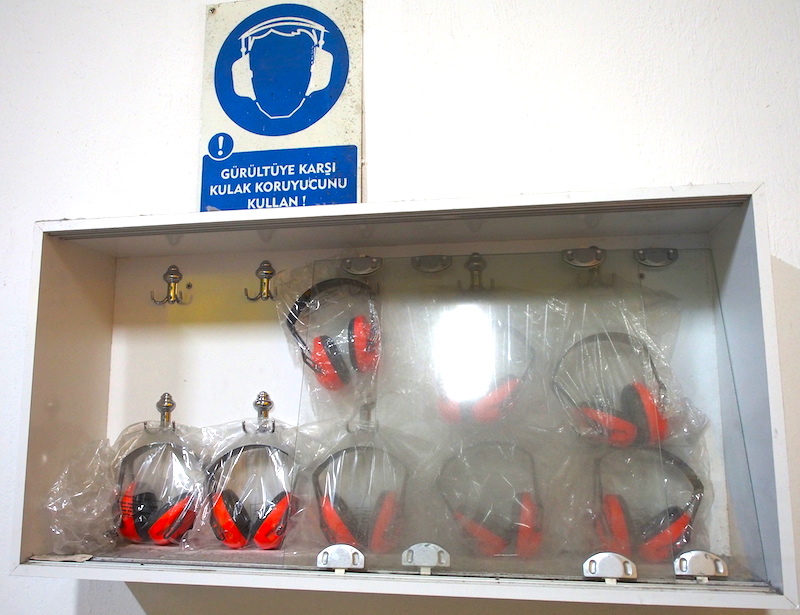Our yarn was sent to a weaving mill of Turkey’s major textile city Denizli. 65% of the local companies are part of the textile sector. Tourists stop there to shop for clothes on their way to the impressive landscape of Pamukkale, the cotton castle: A single hill covered in a white shell made of limestone. On top, thermal springs were used as a spa by the ancient greeks and romans who built a whole city up there.
Already in 1332, the traveler Ibn Batuta described: “the cotton cultivated here is of the finest quality and excellent fabrics are made here, with gold or silver embroidery.” Our weaving mill also has a long tradition, as a few ancient pictures in their meeting room state.
Today, the weaving mill is situated in an industrial area full of textile companies on the outskirts of Denizli. A few turkeys greeted me at the entrance of the peach colored company building. Gülcin, a very friendly sales director who speaks German and English as well as I do, showed me around.
Weaving basics: warp & weft
Basically, on a loom, a shuttle interweaves the weft (horizontal thread) into the warp (set of lengthwise threads). It takes at least one whole work day and several machines to arrange the threads on a warp and install the loom. Then, more or less 200m of fabric can be weaved by one loom per day.
From yarn to fabric
A first gigantic machine rolls the yarn from hundreds of bobbins onto one big warp beam. On the drawn-in machine, the warp is arranged to fit the fabric pattern. The warp beams queue in a line for the next step: a wax bath to avoid the threads breaking during the weaving process. Now, the warp is ready for weaving.
At the entrance, we were warned and equipped with earplugs: “Kulak koruyucunu kullan!” You’d better protect your ears! 72 looms, continuously weaving while sitting all together in one single hall, drown each other with their roaring staccato. The looms from Germany and Belgium weave 400.000m of fabric monthly, of which 10-20.000m a month are organic.

As we arrived in the weaving hall, two workers were just finalising the loom and together, we observed the very first centimeters of weaving. A historic moment for MISOGI DOGI!
A first piece was cut out to be controlled. Covered with starch, the fabric was still very stiff and unbleached.
I had been told that the weaving mills produce minimum quantities of fabric because their machines are huge. When I saw the looms, my first thought was: come on, they are not THAT big! It’s in the finishing mill that I found the giants…
Organic weaving
As for spinning, weaving is also mainly a mechanical process. There is one key difference between organic and conventional weaving: to protect the threads from breaking and stabilize them during the weaving process, they are waxed. Instead of toxic wax, an environmental-friendly stabilizer such as corn or potato starch is used for organic fabrics.
As for spinning, the weaving process uses a lot of electric power. Currently, Turkish power is mainly generated from natural gas, coal and hydro-electricity. The government intends to establish some nuclear power capacity. MISOGI DOGI intends to rapidly grow and support the mills in installing renewable energy equipment. Didn’t I already mention in part I?: Turkey offers ideal conditions: a lot of sun and … a lot of wind!